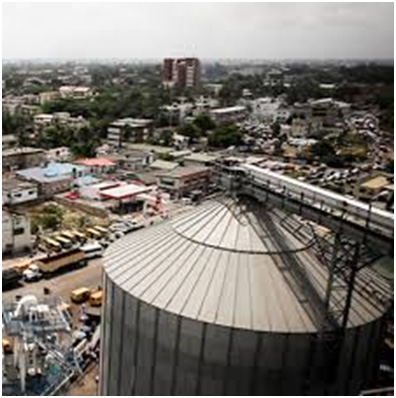With total assets turnover of Flour Mills Nigeria Plc (FMN) remaining low and debts to assets ratio on the high side during the half year (H1) period ended June 30, 2015, analysis revealed other factors that the group needs to address to return to profitability.
FMN performance during the H1 2015 when compared with the same period of 2014 showed a 2 per cent or N1.7 billion revenue decline from N83.9 billion posted for H1 2014 to N82.3 billion for the same period of 2015.
Its profit before tax profit dropped 66 per cent or N2.4 billion from N3.54 billion in H1 2014 to N1.19 billion in H1 2015, while Profit after tax also fell 66 per cent or 1.9 billion to N972 million from N2.8 billion in the corresponding period of 2014.
Analysis of its profitability showed that operating profit margin for H1 2015 was 1.4 per cent, a 2.8 per cent decline from 4.2 per cent achieved in H1 2014. Net Profit margin likewise decreased by 2.18 per cent to 1.18 per cent for H1 2015 from 3.36 per cent realized in H1 2014.
Despite a 2 per cent decline in the group’s cost of sales from H1 2014 to H1 2015 as well as a dropped in spending evident in its 1.6 per cent expense reduction, the group was not making sufficient turnover for efficient profitability.
Total assets fell N3.2 billion or 0.9 per cent to N339.7 billion while total liabilities for the group shed N4.2 billion or 1.6 per cent to N251.3 billion.
Measuring FMN’s asset utilization, it was revealed that total assets turnover remained at 0.24 for the two periods under review, a ratio below the industry average, an indication of insufficient business revenue in relation to its asset investment.
Return on total assets however declined 0.6 per cent compared with 0.8 per cent recorded in 2014 further confirming a reduction in the efficient use of the group’s total assets.
Debts to assets ratio also decreased slightly to 74 per cent from 74.5 percent in 2014, but should remain a major concern that 74 per cent of FMN’s assets were still being financed by debt.
Assessing the group’s liquidity, its current ratio rose slightly from 0.68 recorded in 2014 to 0.69 for 2015, still below industry standard and indicating the extent to which the claims of short-term creditors were covered by assets that were expected to be converted to cash in a period roughly corresponding to the maturity of the liabilities. Debt recovery policy also needed to be further addressed.
Moreover, FMN showed a diminished capacity to raise cash in order to repay its debts on time as its current ratio had shown no improvement from previous results. However, this situation could suggest that the company’s was recuperating from investment in capital projects recently undertaken.
As total equity improved by N972 million to N88.4 billion, its stock price on its last trading session- 28th August recorded a 3.20 per cent or 76 kobo decline from previous trading session to close at N23.
By Pita Ochai
[divider]



